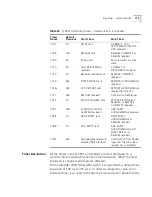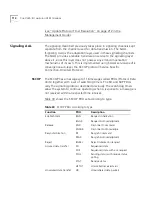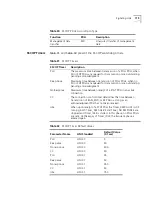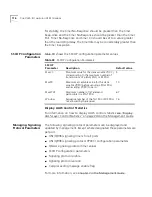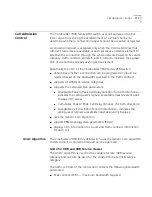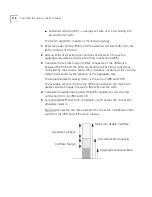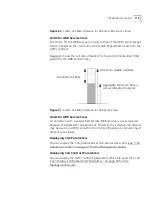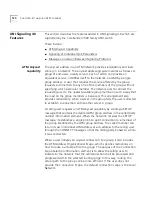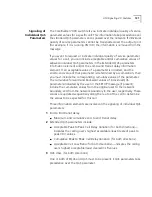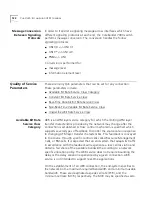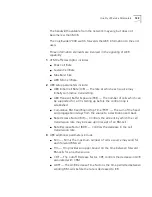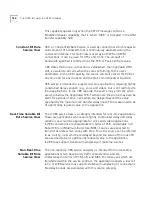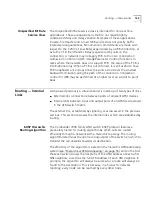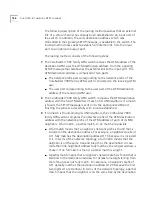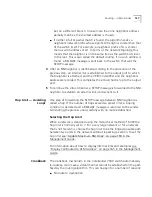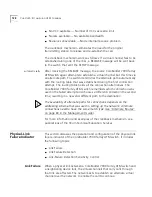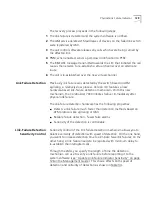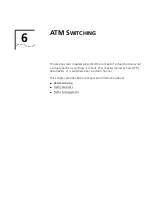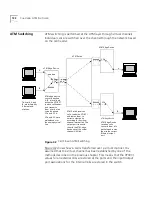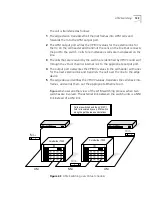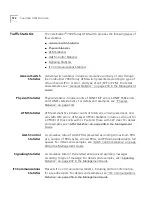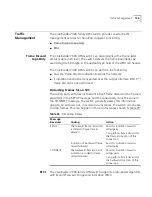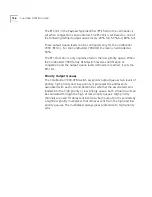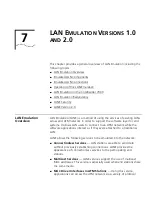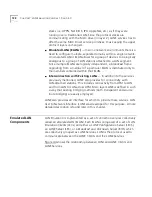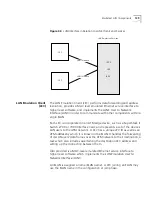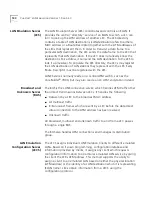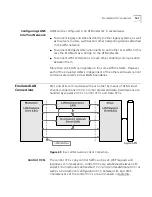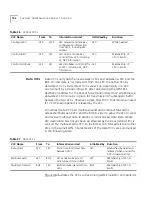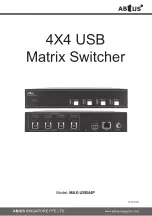
Routing — Internal Links
127
but on a different branch. In case more than one neighbor’s address
partially matches, the shortest address is chosen.
If neither a full or partial match is found, the algorithm seeks a
neighbor’s network prefix whose significant length is shorter than that
of the switch itself. For example, a neighbor’s prefix of A is shorter
than a switch address of A1. In terms of the network topology, this
means that the neighbor is on the same tree as the switch but closer
to the root. This is also called the
default
routing. If no such address is
found, a RELEASE message is sent back to the switch that sent the
SETUP message.
4
After an NNI neighbor is identified according to the procedure of the
previous step, an internal link is established to the output port to which
that neighbor is attached, and the VPI/VCI identifier and the neighbor’s
address are recorded. This completes the virtual channel up to the output
port.
5
To continue the virtual channel, a SETUP message is forwarded to the NNI
neighbor to establish an external link (connection) to it.
Hop Limit — Avoiding
Loops
One step of forwarding the SETUP message between NNI neighbors is
called a
hop
. If the number of hops exceeds a preset limit, a looping
condition is declared and a RELEASE message is returned to the sender,
terminating the process unsuccessfully with no route established.
Selecting the Hop Limit
When a network is designed using the hierarchical method of E-IISP the
hop limit is normally set to 7. For a very large network or for a network
that is not hierarchic, choose the hop limit to be the longest possible path
between two units in the network without repeating a section. To set the
hop limit see “Update Maximum NNI Hops” on page 194 in the
Management Guide.
For information about how to display internal links and examples see
“Display Call Routed to ATM Address” on page 165 in the Management
Guide.
Crankback
The crankback mechanism in the CoreBuilder 7000 switch automatically
re-routes a call in case a virtual channel cannot be established on the path
fixed by the routing algorithm. This can happen for a number of reasons:
No route to destination
Summary of Contents for CoreBuilder 7000
Page 12: ......
Page 30: ...30 CHAPTER 1 ATM NETWORK BASICS...
Page 32: ...32 CHAPTER 1 ATM NETWORK BASICS...
Page 34: ...34 CHAPTER 1 ATM NETWORK BASICS Figure 8 LANE Network over WAN...
Page 96: ...96 CHAPTER 4 PRIVATE NETWORK TO NETWORK INTERFACE PNNI VERSION 1 0...
Page 184: ...184 CHAPTER 7 LAN EMULATION VERSIONS 1 0 AND 2 0...
Page 206: ...206 CHAPTER 9 DEVICE MANAGEMENT...
Page 222: ...222 APPENDIX A TECHNICAL SUPPORT...
Page 234: ...234 APPENDIX B PROTOCOLS AND INTERFACES...
Page 238: ...238 APPENDIX C COREBUILDER 7000 FAMILY ATM SWITCH SPECIFICATIONS...
Page 242: ...242 APPENDIX D SAFETY INFORMATION...

